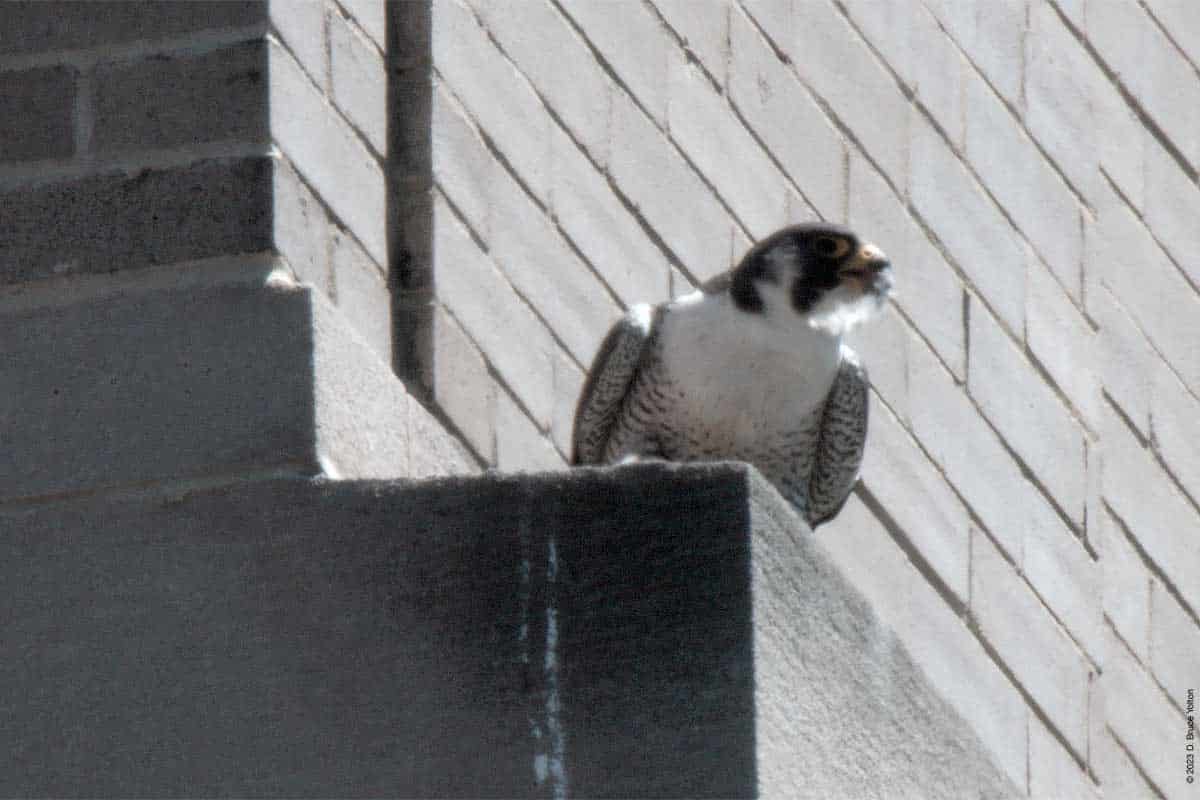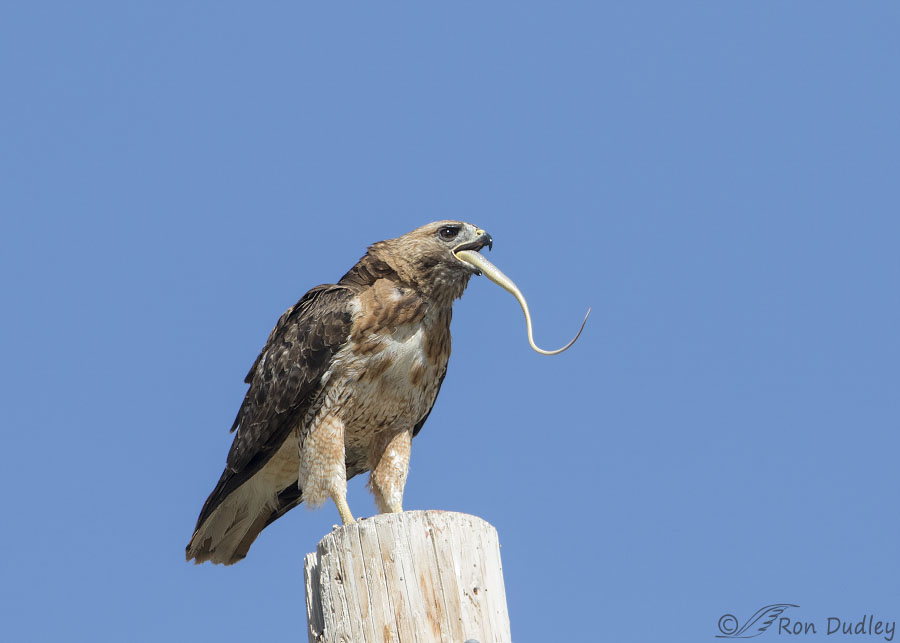
It breeds from central Alaska to northwestern Canada, with the largest number of birds breeding in the Yukon or western Alaska, reaching their southern limit in north-central British Columbia. The typical tail of a Harlan's hawk is white with a thick black subterminal band but individuals may vary considerably and the tail may be reddish, dusky, whitish or gray and can be longitudinally streaked, mottled or barred. On average, immatures have more extensive pale streaking above and mottling below, but much individual variation has been recorded. Unlike most red-tailed hawks, immatures are generally similar enough to adults that it can be difficult to distinguish them. There are up to four main variations from the typical one described above: extreme dark morph (where even the throat is black and no pale streaking is present), dark morph (with barring still present from the tarsus to the underside), rare pale morph (with few blackish blobs on the belly and generally a whiter head) and perhaps even rarer types, the base color of which is grayish. Apart from a variably white-streaked throat, their underparts are usually mostly black with variable white streaking and barring on the thighs or crissum. Harlan's hawks usually have faint streaks on the sides of their head and about their chest with a bit of gray mottling or speckling on the scapulars. Throughout the morphs of this subspecies, the plumage is predominantly blackish, lacking any warmer or brownish tones (save the tail). Harlan's hawk is markedly different from all other red tails and can be identified nearly 100% of the time by an experienced hawk watcher. Most modern authorities recognize Harlan's hawk as a valid subspecies. Palmer (1988) classified as it (perhaps improbably) as a mere western color morph. The historic taxonomic status of Harlan's hawk has been quite erratic sometimes, it has been classified as its own species, B. A wintering female in eastern Kansas weighed 1,629 g (3.591 lb). calurus tends to have a much longer tarsus than Harlan's hawks do, as expected due to the latter's habitation to cold environments almost year around. On the contrary, though, they are highly sexually dimorphic in size (the most dimorphic of any in the United States) and mature females are sometimes more massive than almost any female B.


calurus), this race is sometimes described as slighter and lighter. While similar in linear dimensions to the western red-tailed hawk ( B. Harlan's hawk or Harlan's red-tailed hawk ( Buteo jamaicensis harlani) is a subspecies of the red-tailed hawk.


 0 kommentar(er)
0 kommentar(er)
